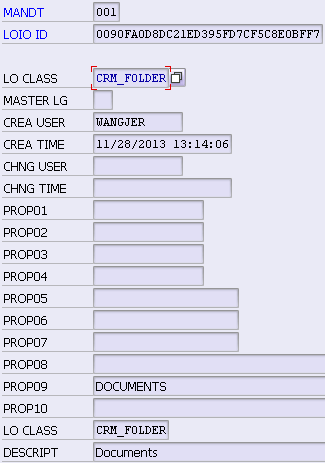
- SAP Community
- Products and Technology
- CRM and Customer Experience
- CRM and CX Blogs by SAP
- How is attachment physically stored in database ta...
- Subscribe to RSS Feed
- Mark as New
- Mark as Read
- Bookmark
- Subscribe
- Printer Friendly Page
- Report Inappropriate Content
If you want to know more technical detail, please find my blog list here.
For more detail about CRM content management, please go to my wiki page CRM Content Management.
History:
Content Management(CM) was introduced in basis release 6.10 and implemented in CRM 3.0. Before CM was used, CRM applications was using the Business Document Service (BDS) or Generic Object Services (GOS) to implement Document management requirement. BDS was used in most applications like Business partners, products, product catalogues, solution database, campaigns. GOS was only used in the One Order objects like activities and opportunities. All BDS applications changed to CM in 3.0, the One Order objects only in 3.1.
A document in CM consists of several objects. The most important two are so called “logical info object” (LOIO) and a “physical info object” (PHIO). A LOIO as a logical folder or bracket which holds PHIOs together, while a PHIO represents the content of a specific version of a document. Let's use the word edit in the real world as example. If one works on a Word document and changes the document over time, each saved version would be represented by a PHIO. The LOIO would be the word document itself. This is much like if one looks at SE38 in ABAP: The program name is the LOIO and each transported version of the code is the PHIO.
Let's see an example. I have a product ZCM_DEMO with guid 0090FA0D8DC21ED395FD7C687F99BFF7, BOR type = BUS1178.
I create one attachment for it:

Go to table SKWG_BREL, input product guid 0090FA0D8DC21ED395FD7C687F99BFF7, and we see two entries belonging to this product. The first entry indicates a folder instance which is actually a logical container to hold all attachments for the given product.

The content of column INSTID_B has naming convention as <type: F(older) or L(ogical object)><Logical object type name><guid>.
The guid in the first row can be found in table CRM_FOLDER:

The guid 0090FA0D8DC21ED395FD830F8DD9DFFF in the second row can be found in table BDSLOIO22, together with the name of attachment.

You are asking how I get to know the name of table BDSLOIO22? If one application wants to use CM to store document, it should have its dedicated class for physical object and logical object, or use the default one CRM_L_DOC. The relationship between application and its class is maintained in tcode DMWB:

in table BDSPHIO22, by specifying logical information object ID, we can get all phyiscal object lists.

once you get phyical object id 0090FA0D8DC21ED395FD830F8DD9FFFF, you can find the respective entries in table BDSCONT22.

The real content of attachment is stored in a claster way, so you cannot see its detail in SE16.

How do I know the database table name BDSCONT22?
1. Get the storage category BDS_DB22 by physical class name.

2. execute function module SCMS_SDOKSTRE_LIST to get all lists of database table. Then you can find the table name BDSCONT22 for your storage category BDS_DB22.

- SAP Managed Tags:
- SAP Customer Relationship Management
You must be a registered user to add a comment. If you've already registered, sign in. Otherwise, register and sign in.
-
Business Trends
270 -
Business Trends
11 -
chitchat
1 -
customerexperience
1 -
Event Information
256 -
Event Information
18 -
Expert Insights
30 -
Expert Insights
51 -
Life at SAP
133 -
Life at SAP
1 -
Product Updates
666 -
Product Updates
24 -
SAP HANA Service
1 -
SAPHANACloud
1 -
SAPHANAService
1 -
Technology Updates
453 -
Technology Updates
15
- SAP Enterprise Service Management in CRM and CX Blogs by Members
- Show PDF document in a Popup window on CRM WebUI Screen in CRM and CX Blogs by Members
- Migration of CRM one order transactions from SAP CRM 7.0 to SAP S/4 Hana Customer Engagement in CRM and CX Blogs by SAP
- Generic Object Services (GOS) toolbar in CRM Billing in CRM and CX Blogs by Members
- S/4HANA Conversion with Integration to SAP Cloud for Customer in CRM and CX Blogs by SAP
| User | Count |
|---|---|
| 5 | |
| 2 | |
| 2 | |
| 2 | |
| 2 | |
| 1 | |
| 1 | |
| 1 | |
| 1 | |
| 1 |